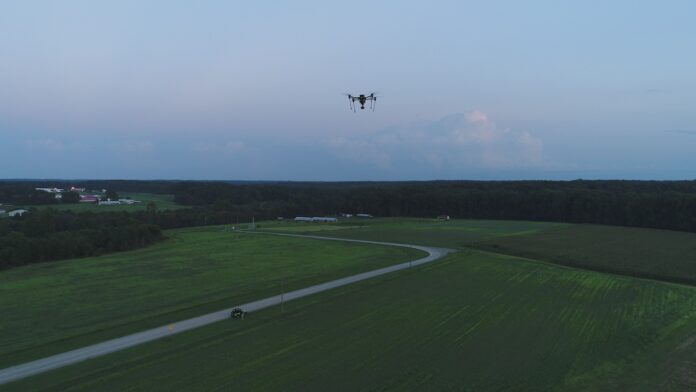Ericsson and AERPAW used 5G drone technology to monitor a field of cattle for information on grazing patterns
Ericsson today announced a collaboration with Aerial Experimentation and Research Platform for Advanced Wireless (AERPAW), funded by the National Science Foundation and a consortium of industry partners, to explore and advance the use of 5G drone operation for smart agriculture applications.
The pair conducted a demonstration at North Carolina State University using AERPAW’s mid-band spectrum (3.4 gigahertz), a custom drone equipped with a connected camera and local compute capacity. The drone’s job was to monitor a field of cattle for information on grazing patterns. The footage was streamed over a 5G connection enabled by an Ericsson base station and Ericsson Cloud Packet Core network.
According to Ericsson and AERPAW, the trial achieved network speeds exceeding 100 Megabits per second in the uplink and more than 450 Megabits per second in the downlink.
“It’s great to see Ericsson and AERPAW showcasing how collaboration can bring together research and 5G networks to support critical operations supporting public safety and agriculture monitoring,” said Per Wahlen, vice president and head of business development at Ericsson North America. “Wide-area network coverage is needed to safely expand drone operations beyond visual line-of-sight missions, and this research provides the improved capabilities for more diverse and critical applications.”
As if in preparation for this demonstration, Ericsson earlier this year worked with US Cellular to test the performance of the carrier’s 5G network at altitude using drone technology withe the goal of “set[ting] the stage for future connectivity of drones in the air.” The trials, which were supported by the Ericsson Connected Drone Testing and Ericsson Device Analytics, involved flying a drone outfitted with a 5G smartphone and RF measurement equipment between two of US Cellular’s commercial 5G towers in Beloit, Wisconsin.
In reference to the latest trials, Mihail L. Sichitiu from AERPAW claimed that smart agriculture is likely to be “a large growth segment” for drones. “And field testing at sites like AERPAW is critical both for exploring what’s possible and for ensuring operational safety. Only a drone under constant monitoring and control is a safe drone,” Sichitiu added.
Use cases beyond the monitoring of livestock include delivery of supplies and objects for commercial use, improved air traffic control under Federal Aviation Administration regulations and command and control of unmanned aerial vehicles (UAVs) over cellular links, stated Ericsson in a press release.
AERPAW, based in Raleigh, NC, is one of four testbeds in the Platforms for Advanced Wireless Research (PAWR) program supported by the National Science Foundation (NSF). Its mission is to accelerate fundamental research with unmanned aerial vehicles using advanced 5G wireless communications and networking technologies.
The AERPAW platform is just one of four test beds in the PAWR program. The two other live testbeds are: POWDER in Salt Lake City, which is focused on software-defined networking and massive MIMO research; and COSMOS in the West Harlem neighborhood of New York City, targeting programmable networks and innovation in optical backhaul.

